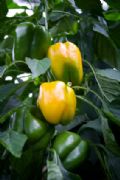|
Ready for a little experiment? Grab that jar of sugar, a measuring spoon, a plate and a can of regular soda. Then, dump one teaspoon of sugar onto the plate. Repeat this nine more times. Do you know what you have, besides a mess? The amount of sugar in one 12-ounce can of soda! Just look at that mound! Now locate the sugar listing on the soda's nutrition label—40 grams. Four grams of sugar equals one teaspoon. Do the math. That innocent can of pop contains 10 teaspoons of sugar and 160 empty calories. Even if you don’t drink regular soda, the typical American now eats the equivalent of about 17 teaspoons (68 grams) of added sugars every day. That sugar alone adds up to 270 extra calories—more than 13% of the average person's caloric intake. Less is MoreSo how much should you be limiting these added sugars? Several health organizations, such as the 2015-2020 Dietary Guidelines for Americans, the World Health Organization and the American Heart Association have established guidelines regarding the intake of added sugars. A healthy eating pattern should limit added sugars to less than 10 percent of calories per day. This does not include naturally occurring sugars found in fruits (fructose) and dairy products (lactose). The chart below lists this maximum recommended daily sugar intake based on various calorie levels. Maximum Sugar Intake
(10% of Calorie Intake)
Deciphering LabelsIt can be confusing to try to find out how much added sugar a food contains. The sugar listing on a Nutrition Facts label lumps all sugars together, including naturally-occurring milk and fruit sugars, which can be deceiving. This explains why, according to the label, one cup of milk has 11 grams of sugar even though it doesn't contain any sugar "added" to it. To determine how much sugar has been added to a food product, follow these two tips:
Hidden Sugars in Foods
There is room to include a small amount of added sugars in your eating plan to improve the palatability and flavor of nutrient-rich foods—a sprinkle of brown sugar on your morning oatmeal or a dribble of honey in tart plain yogurt. However, the main sources of added sugars like sugar-sweetened beverages, sweets and snacks, need to be limited. These type foods provide little nutritional value to one’s diet but may be adding a substantial amount of unwanted calories. | ||||||||||||||||||||||||||||||||||||||||||||||||||||||||||||||||||||||||||||||||||||||||||||||||||||||||||||||||||||||||||||||||||||||||||||||||||||||||||||||||||||||||||||||||||||||||||||||||||||||||||||||||







